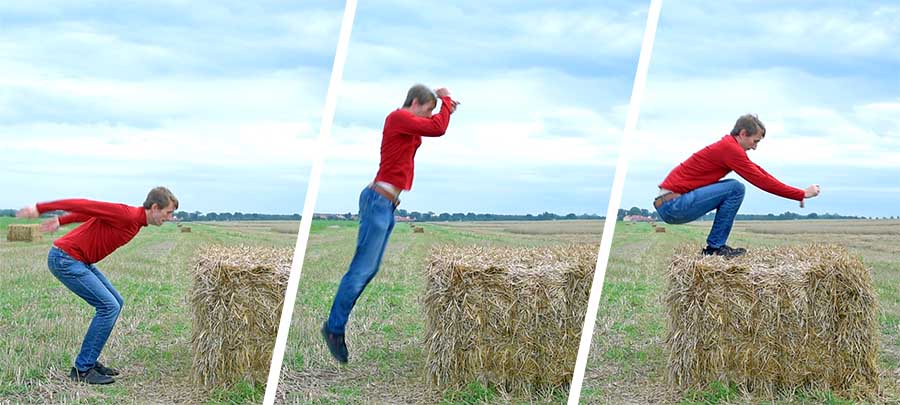You’ll often find cycling recommend as a knee-friendly cardio exercise and for some knee injuries it can even be part of the rehab program.
So the big question today is:
Does cycling help patellar tendonitis?
Let’s find out.
Cycling for Tendonitis Rehab?
If you’ve watched any of my other videos, you probably already know that to recover from patellar tendonitis you need to expose the tendon to progressive loading with slow strengthening exercises.
In other words you need an exercise that:
- You can do slowly, to accumulate a lot of time under tension
- You can scale up incrementally, to safely increase the force on the tendon
- You can do without causing tendon irritation or a big increase of pain
Our usual suspects for tendon strengthening exercises are slow squats, slow leg presses, isometrics holds and so on. We’ve already talked about this.
But, now we can use the list of requirements to check whether cycling also fits the bill.
Slow Strengthening Work
The main purpose of doing an exercise like the squat slowly is to prevent energy storage in the tendons and to keep the forces you’re exerting on the knee from spiking.
These force spikes happen whenever you’ve accelerating or decelerating a lot, especially when you’re jumping, but it also happens at the turn-around point in squats.

The faster you squat, the more you first have to decelerate and then accelerate again at the turn-around point. By moving slowly we take this spike away and make the exercise a lot safer for someone with patellar tendonitis.
In cycling you can do the same thing much easier because it’s a continuous movement and you don’t decelerate the pedaling motion at any point. You still want to avoid sprinting and hills to keep the force low in the beginning.
Other than that cycling meets the first requirement on our list because you can easily accumulate a lot of timer tension. Moving on…
Scaling the Resistance
The second requirement for rehab suitability was that you can scale the exercise up incrementally.
And I think that’s cycling’s main short-coming if you want to use it to strengthen the patellar tendons. When you’re cycling, the force you need to exert to keep moving depends on two things:
- The incline you’re on
- The gear you’re in

So to scale up the force you’re exerting on the tendons you could ride in higher gears as the weeks go by and your tendons get stronger. Keep the route and your speed the same, but ride with a higher gear each week.
With that change cycling also meets the second requirement, even though it’s not without limitations.
Does Cycling Cause Pain?
The third item on list was that you should be able to do the exercise without irritating your knee or a big increase of pain.
Of course, ideally there should be no pain at all, but the consensus in academic research is that a small amount of pain during or after rehab is okay as long as it goes away again in less than 24 hours.
You probably already know how your knees react to cycling. This reaction is the most useful indicator you have to decide whether cycling is safe for you or not.

How do your knees feel after cycling?
If you get a lot of pain or if pain stays high for more than 24 hours, cycling is not a good choice for you, I’m sorry.
With all that in mind, cycling can help patellar tendonitis, but its usefulness as a rehab exercise has strong limitations.
Limitations of Cycling for Patellar Tendonitis Rehab
The biggest limitation may be that you can’t increase the force you apply on the tendon in a controlled manner, unlike with a leg press for example, where you could scale up in 2.5 kg increments.
That’s why I see cycling more as an additional rehab tool to get more time under tension or to get a safe cardio workout, once you’ve already made good progress with the conventional exercises.
Cycling may also work in the early rehab stages if you can do it without pain, but it’s far from ideal, because force and time under tension are much more difficult to track than in conventional tendon exercises.
And the reason you want to track these variables is to prevent setbacks, by scaling up in a controlled manner.
So cycling can help patellar tendonitis, but it shouldn’t be the only thing you do since cycling can’t get you back to 100%.
One thing that has helped me cycling without pain back when I had patellar tendonitis is knee sleeves. I talk about how knee sleeves can be useful for patellar tendonitis in this video.
And if you’re looking for safe cardio exercises that you can do with patellar tendonitis, check out this article.
